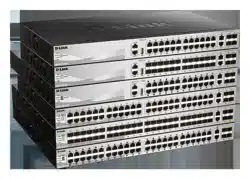Loading ...
Loading ...
Loading ...

DGS-3130 Series Layer 3 Stackable Managed Switch Web UI Reference Guide
214
Parameter Descriptionx
become the DR, the router with the higher router priority will be elected the DR.
If the routers have the same priority, the router with the higher router ID takes
precedence. Only routers with non-zero router priority values are eligible to
become the DR or Backup Designated Router (BDR).
Select the Default option to use the default value which is 1.
Network Type Select the network type here. Options to choose from are:
• Broadcast - Specifies the network type as broadcast.
• Point-to-Point - Specifies the network type as point-to-point.
On a broadcast network, only the DR and BDR become adjacent neighbors of
all other routers attached. On point-to-point networks, only two routers become
adjacent if they can communicate.
Authentication
Select the authentication type that will be used here. Options to choose from
are None, Simple Password, and MD5.
Password After selecting the Simple Password option, enter the simple password here.
This password can be up to 8 characters long. The syntax is general string that
does not allow spaces.
This creates a password (key) that is inserted into the OSPF header when the
router originates routing protocol packets. Assign a separate password to each
network for different interfaces. Routers on the same network must use the
same password to be able to exchange OSPF routing data. Configure the
routers in the same routing domain with the same password.
MD5 Key ID Enter the MD5 key ID for the password here. The range is from 1 to 255.
MD5
Enter the MD5 key here. This key can be up to 16 characters long. The syntax
is an alphanumeric string that does not allow spaces.
In the MD5 mode, the OSPF message sender will compute a message digest
based on the message digest key for the TX message. The message digest
and the key ID will be encoded in the packet. The receiver of the packet will
verify the digest in the message against the digest computed based on the
locally defined message digest key corresponding to the same key ID.
The same key ID on the neighboring router should be defined with the same
key string.
All the neighboring routers on the same interface must use the same key to
exchange the OSPF packet with each other. Normally, all neighboring routers
on the interface use the same key.
With the MD5 digest mode, the user can roll over to a new key without
disrupting the current message exchange using the new key. Supposing that a
router is currently using an old key to exchange OSPF packets with the
neighbor router, as the user configures a new key, the router will start the roll
over process by sending duplicated packets for both of the old and the new
key. The router will stop sending duplicated packets until it finds that all routers
on the network have learned the new key. After the rollover process completed,
the user should delete the old key to prevent the router from communicating
with the router using the old key.
Click the Apply button to accept the changes made.
OSPFv2 Redistribute Settings
This window is used to display and configure the OSPFv2 redistribution settings. External routes can be redistributed
to normal areas as Type-5 external routes and redistributed to NSSA stub areas as Type-7 external routes by the
ASBR.
If the redistributed external route is of Type-1, the metric represents the internal metric. If the redistributed external
route is of Type-2, the metric represents the external metric. An internal metric will consider the cost of the route from
itself to the redistributing router plus the advertised cost to reach the destination. An external metric only considers the
advertised metric to reach the destination.
Loading ...
Loading ...
Loading ...
